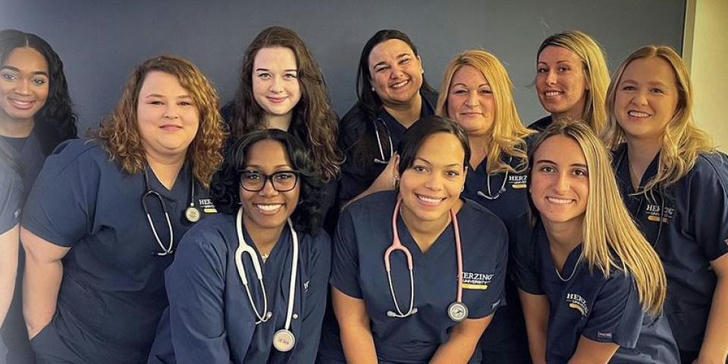Fast-Track LPN to RN: Herzing, 9-Month Programs & Real Online Options
Thinking of moving up from LPN to RN and wondering whether an online path makes sense? Here’s a straight-up, practical guide that ties together what’s real in the U.S. market right now, what to watch for, and how to pick the right route without getting sold a dream.

What “online” actually means for LPN → RN
“Online” LPN to RN programs usually blend remote coursework with required hands-on practice. Schools such as Herzing advertise bridge options where LPNs can complete theory online while doing skills labs and clinical rotations in person or at partner sites — program lengths vary by campus and pathway. That hybrid setup is the normal model: online classes + in-person labs/clinicals.
How fast can you go? Yes, some paths are short — but not magic
There are genuine accelerated or “fast track” bridge programs that let experienced LPNs move to RN in a condensed timeframe. Some community colleges and colleges offer accelerated tracks that can be completed in about 9–12 months if prerequisites and clinical placements line up and the student studies full time. These 9 month Lpn to Rn program options exist, but they’re intensive and often geographically limited. Expect a heavy course load and frequent clinical shifts.
Typical program lengths and formats
🔹Short accelerated/hybrid bridges: ~9–12 months (full time, fast-track).
🔹Standard LPN→ASN/ADN bridges: ~12–18 months (common).
🔹LPN→BSN bridge options: can run longer (often 20–28 months depending on credits transferred).
Herzing’s LPN-to-RN/ASN/BSN pathways, for example, list varying lengths by campus and pathway — check specific campus pages for exact timelines.
Clinical hours, labs and NCLEX prep — these are non-negotiable
Even “online” programs require in-person clinical hours, simulation labs, and supervised skills practice. Programs may advertise online didactics, but expect mandatory on-site labs and clinical rotations (some programs list specific clinical hour totals). Also, check whether the program includes structured NCLEX-RN prep — passing the NCLEX is the ticket to becoming an RN. Don’t pick a school without a clear plan for clinical placements and NCLEX support.
Accreditation, NCLEX pass rates and transparency matter
Before applying, confirm the program’s nursing accreditation (ACEN or CCNE for pre-licensure RN programs) and look up the program’s NCLEX pass rates and completion stats. These numbers are the best public signals of program quality — states like California publish program pass rates, and many schools post recent NCLEX outcomes for prospective students. If a program can’t or won’t share pass-rate data, that’s a red flag.
Admissions, prerequisites and common catches
Most LPN→RN bridges require:
🔸Current LPN/LVN license in the U.S.
🔸Minimum clinical experience (often 6 months–1 year) and a clean practice record.
🔸Completion of prerequisite college courses (anatomy, physiology, microbiology, etc.) and sometimes a minimum GPA.
🔸Demonstrated immunizations, background checks, and a skills check or equivalency exam in some cases. Be ready for fees (background, clinical tracking, simulation fees) beyond tuition.
Cost and return on investment (real talk)
Tuition and fees vary wildly: community college bridge programs are often far cheaper than private-school routes. Expect additional expenses for supplies, drug tests, clinical tracking systems, and NCLEX fees. Balance total cost against projected RN earnings in your area — the RN pay bump usually justifies the investment, but plan a realistic budget and timeline.
How to choose the right program — a quick checklist
1.Accreditation (ACEN/CCNE) — non-negotiable.
2.NCLEX pass rates & completion stats — ask for recent data.
3.Clinical placement process — how and where are clinicals arranged? Who finds sites?
4.Program format & intensity — can personal/work life handle an accelerated schedule?
5.State licensure compatibility — confirm the program prepares you for RN licensure in your state.
6.Total cost & extra fees — request a full cost estimate including non-tuition expenses.
Final word — don’t rush the decision
Legit programs are out there — including legitimate 9 Month Lpn to Rn Program options — but they’re demanding and require solid planning around clinicals and NCLEX readiness. Ask direct questions, get recent pass-rate numbers, verify accreditation, and map out finances before committing. Do that, and an online bridge can be a realistic and time-smart way to move from LPN to RN.
